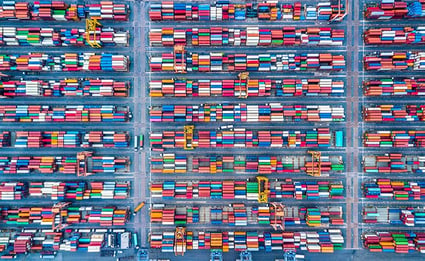The Top Concerns for Your Supply Chain You Cannot Solve
Keith LaBotz - April 28, 2022

Rising fuel prices, inflation, and geopolitical conflicts are top priorities for supply chains, but they’re merely symptoms of a bigger problem.
A recent McKinsey survey of executives on their top concerns points to this problem, it's growing worse, and it's fueling the current crises gripping supply chains.
Most of the concerns listed share something in common: they are consequences of government policies. Governments are supposed to create a healthy environment for economic growth, but the political realm is driven by incentives that often clash with business interests,
This conflict is nothing new, but what’s new is how it’s injecting volatility into supply chains. Geopolitical conflicts, political corruption and fiscal mismanagement have become everyone’s problem, no matter which government is at fault.
The Digitalization Dilemma
Supply chain digitalization has increased dramatically since the last economic crisis in 2008, and it’s creating a dilemma. While this has made supply chains more efficient and expanded global trade, it’s also increased risks.
Business processes appear unchanged on the surface, but increasing connectivity has increased the potential for volatility.
- Digitalization provides visibility to a broader range of changes and disruptions. These transfer through supply chains instantaneously around the clock.
- The network effect amplifies disruptions. When one corner of the world rattles, a wave of cascading failures shakes the entire chain.
- Disruptions are no longer isolated by geography and national borders. Political policies, civil disorder, natural disasters, and military conflicts affect every economy.
Executives Are Cautious
Digitalization is increasing volatility, and some of it originates from government policies and actions. The 2008 financial crisis resulted from government fiscal policies, and the similar effects could happen now with the supply chain wildfire:
- Lockdowns forced businesses to temporarily cease (fail), striking a devastating blow to economies. Supply chains struggling to reestablish equilibrium are volatile, and the effects cascade and amplify through the network.
- To delay catastrophic impact, central banks expanded money supplies, enabling massive government spending and inflation.
- US debt recently reached $30 trillion, 130% of the US GDP. Meanwhile, US debt fuels inflation , which could weaken the economy.
- Economic sanctions against Russia will make global supply chains even more volatile. Sanctions rarely work, the sanctions on Russia since its annexation of Crimea have not resulted in hoped-for changes to date.
- China's zero-tolerance policy on COVID could set the world back again as China is a key player in the supply chain, and volatility will hit many downstream companies in the US and EU.
Learn to deal with volatility
Even if your company was domiciled in the world's most business-friendly nation, it would not insulate it from the policies of foreign governments.
There is No Solution for Volatility
So what is the solution? There is no solution. The conventional wisdom now is to accept volatility as a new supply chain feature. This is not a resignation to volatility but a call to build resilient supply chains that adjust to disruptions and optimize operations for the best possible outcome.
Making the Most of Volatility
Volatility visits supply chain participants without prejudice, which presents an opportunity for companies that respond to it more effectively.
Responding effectively to volatility means building a more resilient supply chain process - adjusting execution to unexpected changes without sacrificing profits and commitments.
An agile logistics process will make the most of this opportunity, and a good place to begin is by optimizing transportation. Solutions like flexis transportation planning and routing optimization can help to manage volatility without disrupting operations and reduce transportation costs by 20%.
Conclusion
Concerns for supply chains are also consequences of government policies, and systems integration is increasing the resulting volatility. There is nothing a company can do but build a more resilient supply chain by having more visibility into the flow of goods, detecting disruptions earlier and responding faster. Intelligent software can help with automated optimization of transportation processes and highlight scenario opportunities.
LATEST POSTS
- Understand Why Production Planning Needs Specialized Solutions
- Understand Circular Economy in The Manufacturing Industry
- How Can Industry 4.0 IT Integration Be Achieved Smoothly?
- The Significance of Order Sequencing in Discrete Manufacturing
- How to improve your Supply Chain Management: The Power of Control Towers



